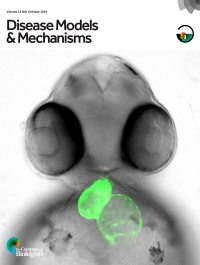 | |
| Discipline | Pathology |
|---|---|
| Language | English |
| Edited by | Elizabeth Patton |
| Publication details | |
| History | 2008–present |
| Publisher | |
| Frequency | Monthly |
| Yes | |
| 4.3 (2022) | |
| Standard abbreviations | |
| ISO 4 | Dis. Models Mech. |
| Indexing | |
| ISSN | 1754-8403 (print) 1754-8411 (web) |
| LCCN | 2008243837 |
| OCLC no. | 268958836 |
| Links | |
Disease Models & Mechanisms(DMM) is a monthly peer-reviewed Open Access biomedical journal published by The Company of Biologists that launched in 2008. [1] DMM is part of the Review Commons initiative, is integrated with bioRxiv [2] for co-submission and is partnered with the Web of Science Reviewer Recognition Service (previously Publons).